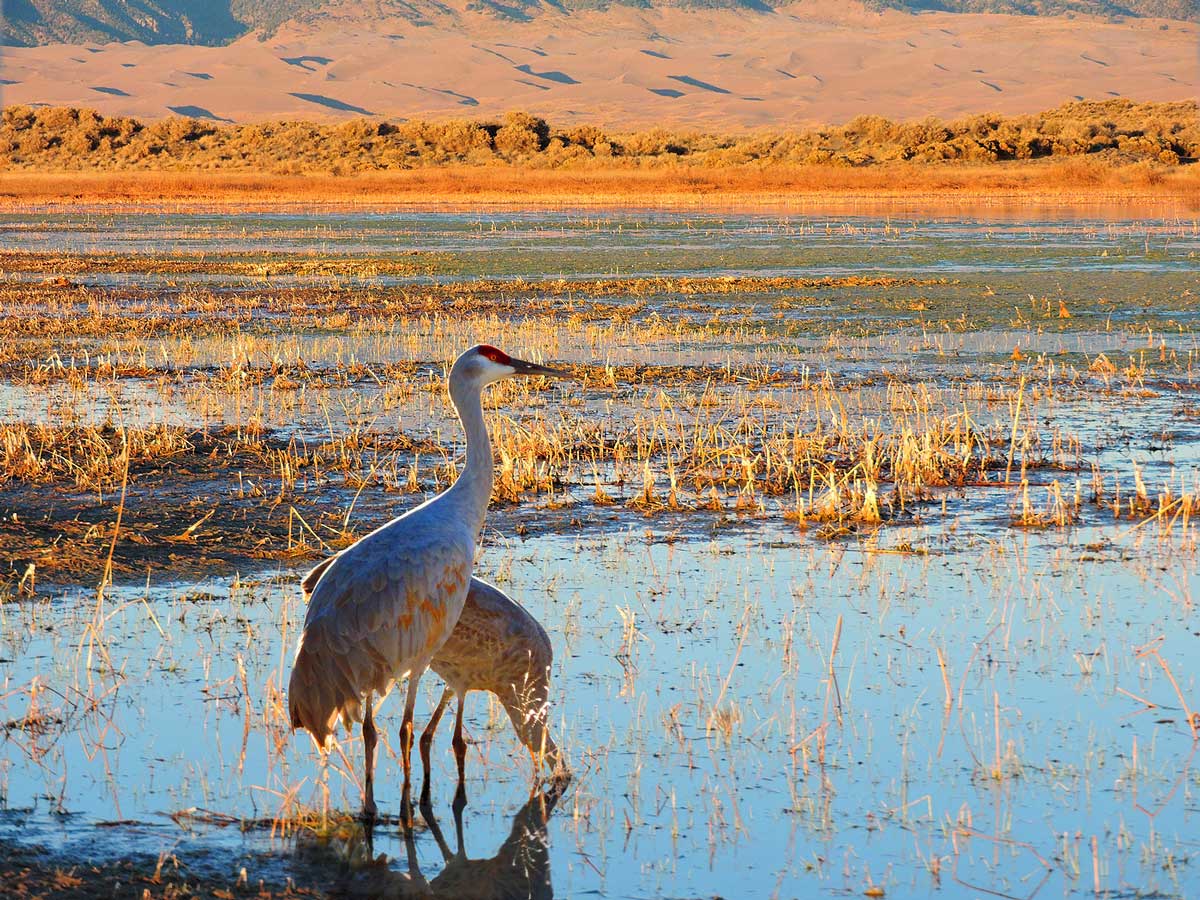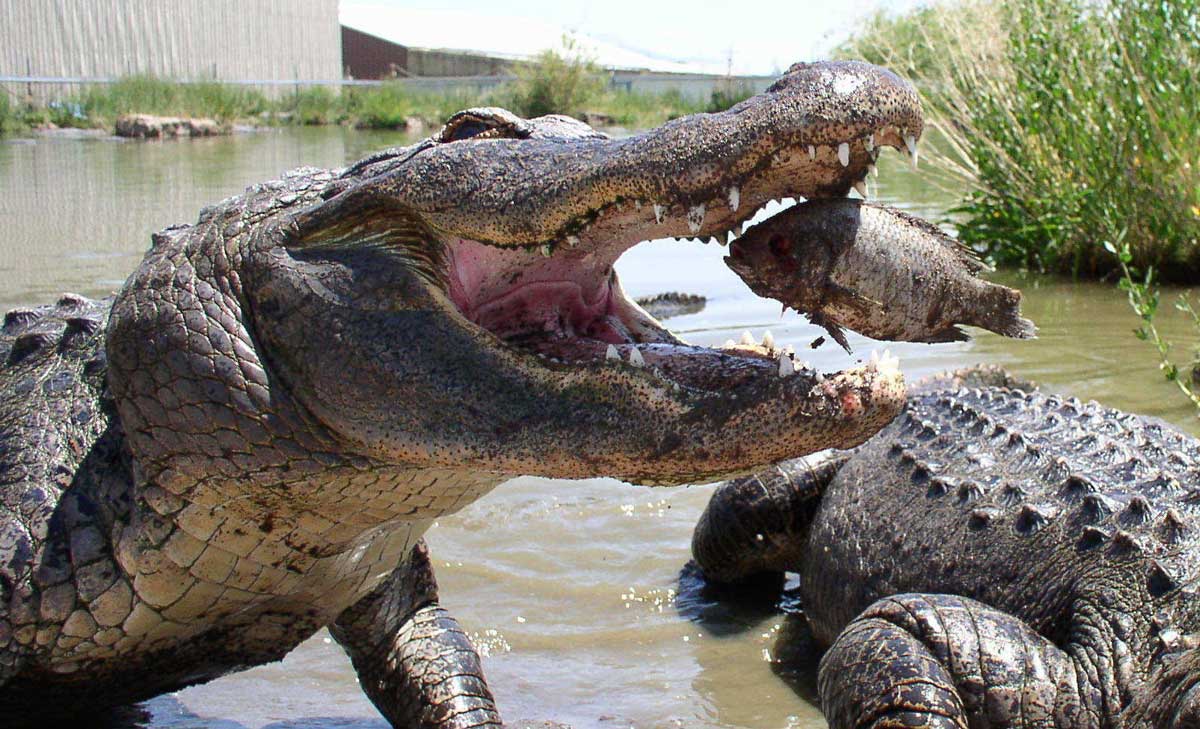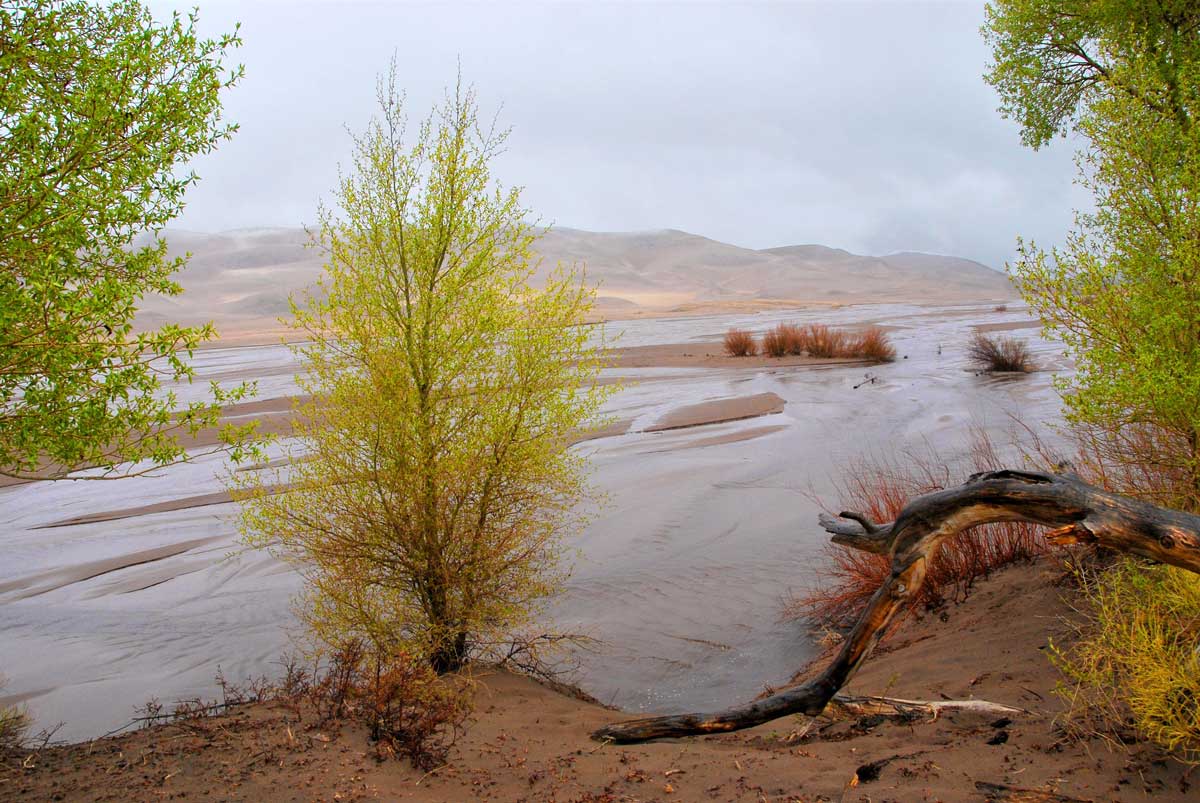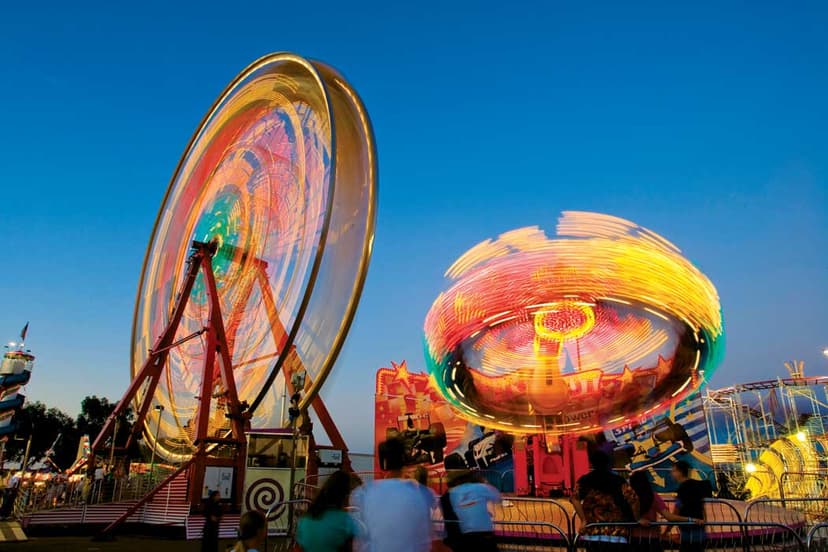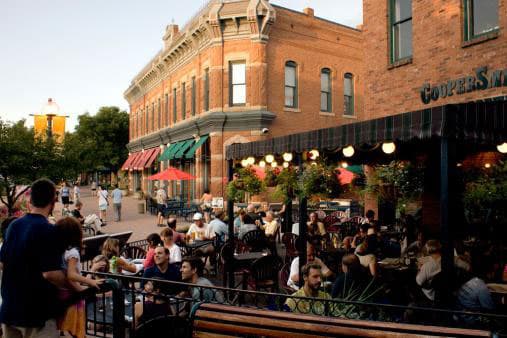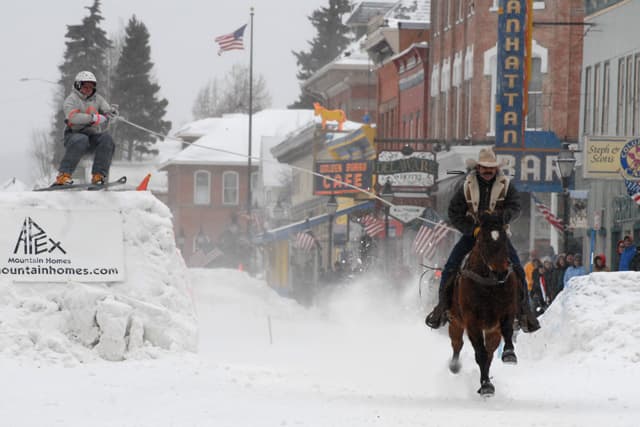Day 1
Leap into the valley’s deep roots in state’s oldest town: San Luis’ history dates back to 1540. La Vega, a plot of land on the edge of town, is where settlers first established a communal way of life in the late 1800s and laid claim to the area’s first water rights before Colorado was even a state. Visit the more contemporary Shrine of the Stations of the Cross for a taste of the area’s vibrant arts scene. Gripping bronze sculptures depict Christ’s judgment, crucifixion and resurrection, positioned along a path that winds up a mesa to an adobe chapel.
Continue north to Great Sand Dunes National Park and Preserve’s visitor center to learn how these seemingly inexplicable dunes — North America’s tallest and one of the newest Dark Sky Parks, as rated by DarkSky International for excellent stargazing opportunities — came to nestle against the Sangre de Cristo mountains. Then, play on Colorado’s most unique “beach” — Medano Creek; and check out Zapata Falls, a cool respite in the summer and a giant ice sculpture in the winter. Blanca Vista Park is a locals’ favorite for its picnic areas, wildlife spotting, well-maintained singletrack trails for mountain biking and views of the Great Sand Dunes from the park’s Crestone Trail.
Detour to Hwy. 17 and check out two unusual spots: the Colorado Gators Reptile Park, where you can see and even handle alligators and other scaly critters; and the UFO Watchtower, a quirky roadside attraction providing information on the valley’s surprising number of UFO sightings.
Day 2
In Alamosa, stop by the Colorado Welcome Center in the historic train depot for maps, local tips on what to see and do, and free coffee to fuel your adventures. To the south, the Cumbres & Toltec Scenic Railroad is an 1880s train that travels from historic depots in Antonito, Colorado, to Chama, New Mexico. The welcome center can also direct you to new hiking/biking trails within the city and along the Rio Grande.
Grab a frothy pint at Colorado Farm Brewery, which produces beer exclusively from ingredients harvested on their family-run farm, then snatch a table at one of downtown Alamosa’s many restaurants. For a sunset adventure, head to the Monte Vista National Wildlife Refuge to view avocets, killdeer, white-faced ibis, herons and other wildlife. Thousands flock to the refuge for March’s Monte Vista Crane Festival to admire 20,000 migrating sandhill cranes.
Take in a beautiful sunset from nearly anywhere in the valley by gazing eastward to the Sangre de Cristo range, which turns crimson as the sun slides below the horizon. Or check out what’s playing at Society Hall, evidence of the town’s grass-roots music scene on the rise.
Quick Tip
Visit Great Sand Dunes National Park & Preserve in the spring or fall to enjoy the park with fewer crowds and see Medano Creek, a seasonal stream created by snowmelt from the Sangre de Cristo mountains above the dunes, at its peak.
Sidetrips
Those who love rock climbing, biking, hiking and hunting may want to spend a day in Saguache, an intimate community one hour north of Alamosa surrounded by the Sangres to the east and San Juans to the west.
A fort-turned-town, Fort Garland was originally established to protect early settlers in the San Luis Valley. The structure still survives as the Fort Garland Museum & Cultural Center, where visitors can tour adobe buildings, view Hispanic art and check out a re-creation of famed frontiersman Kit Carson’s quarters while he served as commander until 1867. In the 1870s, “... many Black soldiers eagerly responded to the government’s call for troops to help create permanent settlements in the West,” according to a History Colorado exhibit there. “Segregated Black units were formed and over 10,000 Black soldiers moved west to help create a new way of life they hoped their people would be able to share.”
The enclave of Del Norte is situated beside the Rio Grande River, which has Gold Medal waters for anglers, particularly those who like float fishing. Other can’t-miss natural wonders include Penitente Canyon, the Natural Arch and Elephant Rocks, where volcanic ash welded together to create rock formations more than 28 million years ago.
Tucked into the base of the Sangre de Cristos, tiny Crestone is a unique blend of spiritual New-Agers who frequent the Hindu temple and Zen center, artists, and outdoor enthusiasts like hikers, campers and birders.
Sargents is another little town tucked in the valley that’s popular with outdoors lovers; and south of Alamosa and Del Norte, Conejos reflects the culture of Old Mexico and boasts fantastic fly-fishing opportunities.

